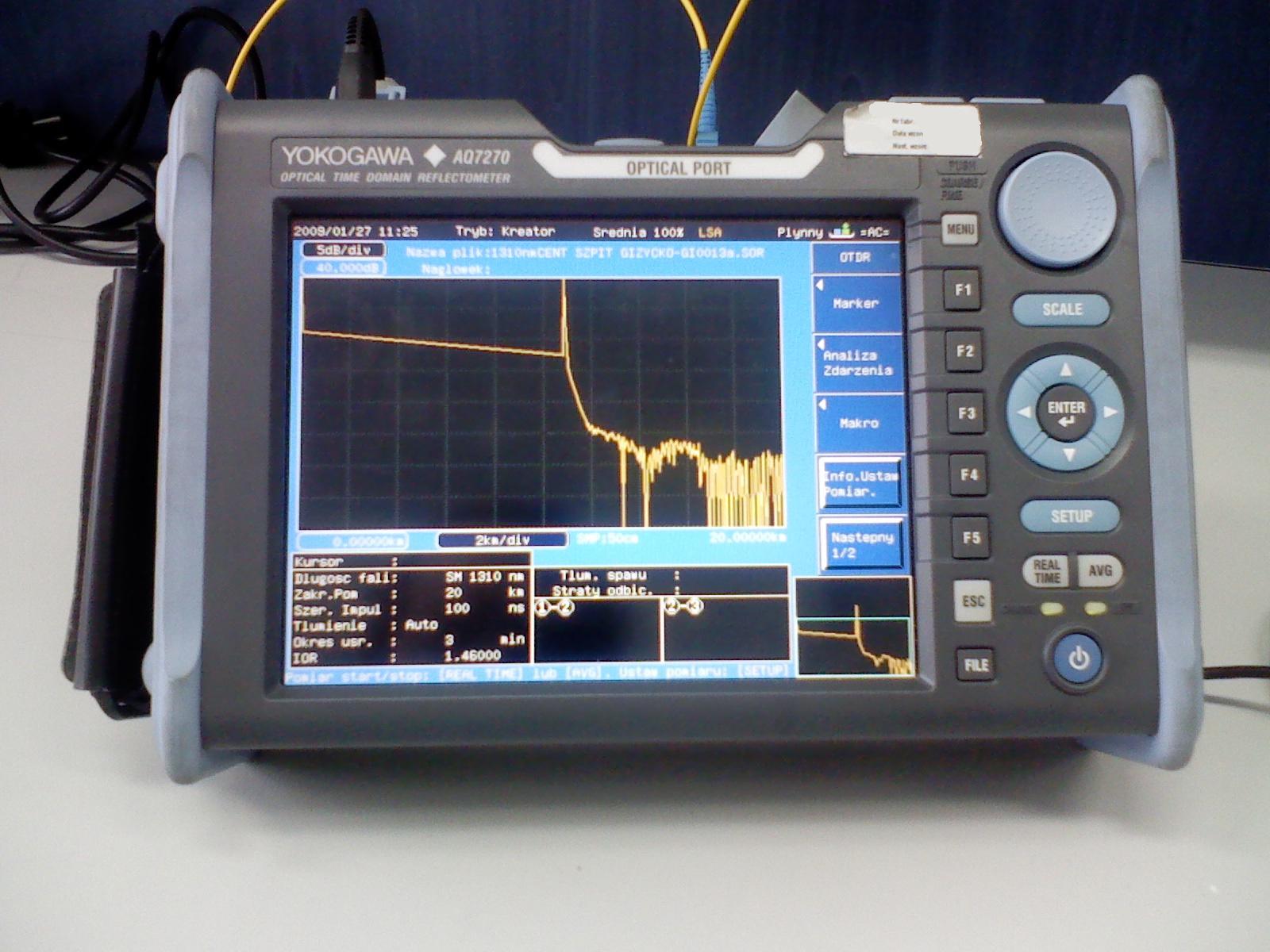Fiber goes further everywhere, as massive deployments lay the foundation for 5G and IoT to improve the ever-changing telecommunications landscape. The promise of tomorrow’s technologies rests on an extremely reliable fiber base, whether in data centers, on-site, or at the customer’s premises.
Fiber Optic Cable OTDR Testing
Verifying the integrity of fiber optic cables with the correct OTDR test methods has never been more important to quickly identify and troubleshoot. Let us explore more about the OTDR test equipment and its use in this post.
What is an OTDR?

Wikimedia
To characterize optical fibers, the OTDR couples a laser and a detector and is based on the principle of reflectometry. OTDR uses laser light and sends it to one side of the optic fiber. As the light travels along with the fiber, a tiny portion of its energy gets absorbed by points along with the fiber, such as splices, multiplexers, splitters, B. connectors, and other components on the optical link, reflected back to the detector. An OTDR curve is a graphical representation of the performance and distance of all elements of the optical fiber. Once saved, the OTDR results can be used to reference the link for future testing.
When should an OTDR be used?
OTDR is the only test device needed for the most accurate and comprehensive end-to-end link validation. Unlike the simple test method for light sources and power meters, the OTDR can identify and locate defects, macro-bends, or breaks that can affect network performance.
Considering the two very different fiber optic applications – OSP cabling (outside plant) and room cabling – OTDR functions vary depending on the situation: on a long cable outside the factory with many seams, OTDR is essential and is often used to make sure that the cable was not damaged during installation and that each splice was made correctly.
And it is used to troubleshoot problems, for example, B. to find cable breaks. Field wiring has short cable lengths and almost never contains splices. Therefore, OTDR is an alternative to the insertion loss test with a light source and a power meter – about ten times the price of OTDR than these fiber testers.
OTDR test terminology
Dynamic Range – It is the maximum optical loss analyzed by the OTDR from the port to a specific noise level.
Event Dead Zone – The minimum distance after a Fresnel reflection that an OTDR can detect another event. In other words, it is the minimum fiber length required between two reflective events.
Pulse Width – The time at which the laser is turned on. When time is converted to distance, the pulse width has a length.
What should you look for in an OTDR?
Choosing an OTDR can be challenging for many, especially the users who are going to use it for the first time. Here are some things to look in to choose the right OTDR for your business.
Reliability and Accuracy
Best-in-class specifications are essential today to ensure that the fiber optic base can support critical 5G and IoT services. OTDR ensures the reliability of fiber optical networks. Therefore, the OTDR measurements are required to be extremely reliable and accurate. In today’s ever-changing telecommunications landscape, reliable, world-class performance ensures the best return on investment. Lower-grade OTDRs have high risks and potentially higher costs.
Simple and convenient to use
Due to the complexity of OTDR testing, businesses should opt for automated test processes and results analysis. Smart diagnostics and intuitive visual indicators can help field teams increase their efficiency with minimal training.
Ruggedness and compact size
As fibers become more densified, the use of OTDRs on-site, in data centers, and even near customer facilities will increase. Look for OTDRs that are designed for comfort and robustness.
Final Words
OTDR testing is one of the best methods of troubleshooting optical fiber cables and networks. By using this testing for troubleshooting, technicians quickly find the flaws in a network and fix them to restore connectivity for businesses.

